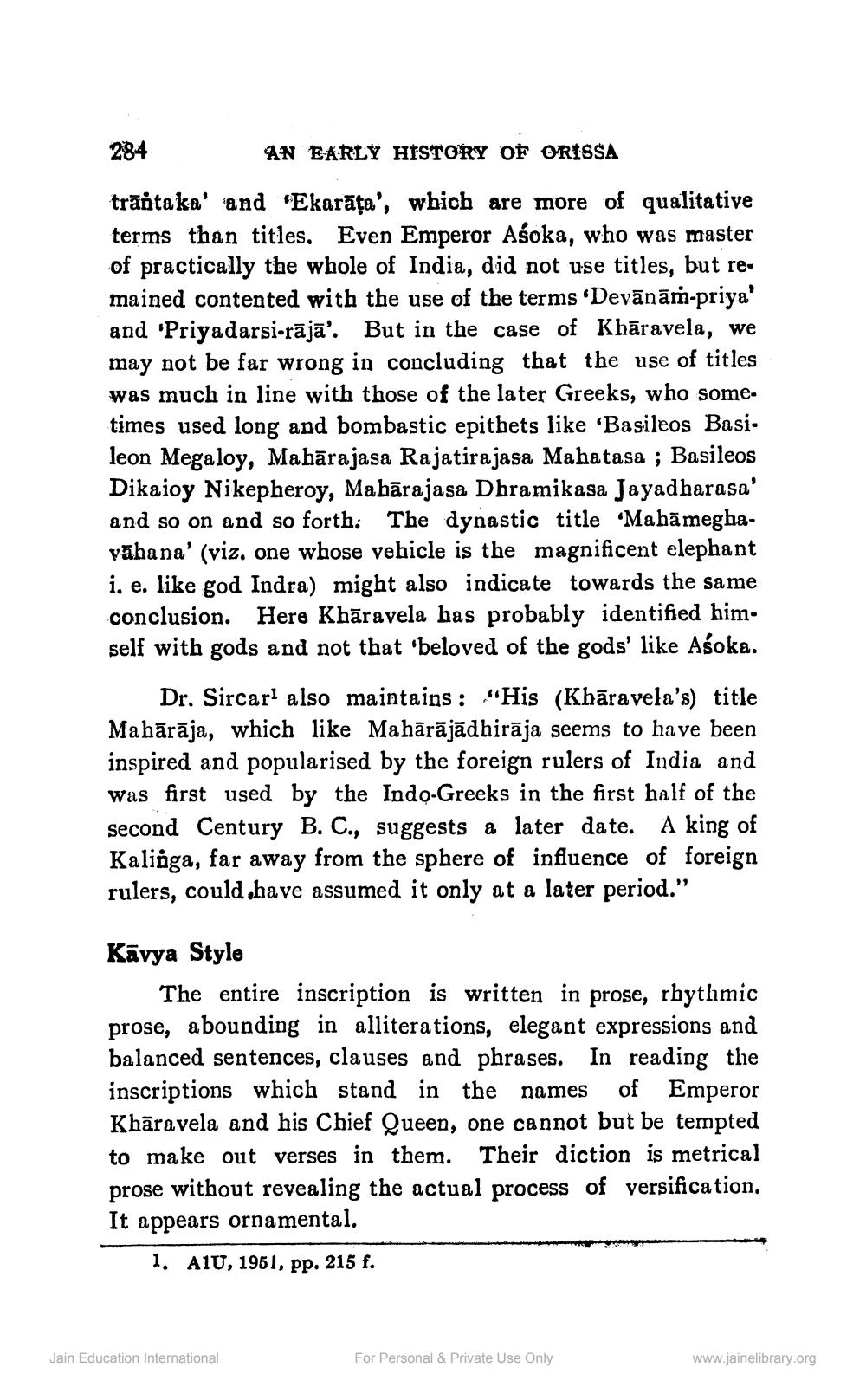________________
284
AN EARLY HISTORY OF ORISSA
trāåtaka' and 'Ekarāta', which are more of qualitative terms than titles. Even Emperor Asoka, who was master of practically the whole of India, did not use titles, but remained contented with the use of the terms •Devānām-priya' and 'Priyadarsi-rājā'. But in the case of Khāravela, we may not be far wrong in concluding that the use of titles was much in line with those of the later Greeks, who some times used long and bombastic epithets like 'Basileos Basileon Megaloy, Mahārajasa Rajatirajasa Mahatasa ; Basileos Dikaioy Nikepheroy, Mahārajasa Dhramikasa Jayadharasa' and so on and so forth. The dynastic title “Mahāmeghavāhana' (viz. one whose vehicle is the magnificent elephant i. e. like god Indra) might also indicate towards the same conclusion. Here Khāravela has probably identified him. self with gods and not that beloved of the gods' like Asoka.
Dr. Sircaralso maintains : "His (Khāravela's) title Mahārāja, which like Mahārājādbirāja seems to have been inspired and popularised by the foreign rulers of India and was first used by the Indo-Greeks in the first half of the second Century B. C., suggests a later date. A king of Kalinga, far away from the sphere of influence of foreign rulers, could.have assumed it only at a later period."
Kāvya Style
The entire inscription is written in prose, rhythmic prose, abounding in alliterations, elegant expressions and balanced sentences, clauses and phrases. In reading the inscriptions which stand in the names of Emperor Khāravela and his Chief Queen, one cannot but be tempted to make out verses in them. Their diction is metrical prose without revealing the actual process of versification. It appears ornamental.
1. A1U, 1951, pp. 215 f.
Jain Education International
For Personal & Private Use Only
www.jainelibrary.org




